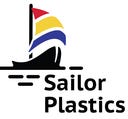What machines are used to make plastic bottles?
Most of us don’t think about the process of manufacturing plastic bottles and the machines used by the suppliers. We might use soda bottles, clean jars, and break down boxes. We also sort these items into their designated bins or bags, but some of us know that plastic bottles are made of different types of plastics identified by the resins. For instance, water bottles are commonly made of PET also known as polyethylene terephthalate, a strong yet lightweight plastic.
Plastics are used to make many products, such as polyester fabric, cable wraps, films, and packaging of food and beverages. First off, in the manufacturing process, different plastics are identified by resin code. These codes are numbered as #1, #2, #3 and so on according to recyclability inside a triangle located on the bottom of each container. Plastic containers and bottles may look alike but may not be the same because each resin consists of a precise chemical molecule. Plus, most of the resins mix well but some that don’t, recycling them together is like mixing oil and water.
PET plastic bottle suppliers:
Manufacturers produce a wide array of bottles from plastic, including water bottles, soda bottles, and food containers, such as those for salad dressings and honey. However, Polyethylene terephthalate (PET) is a particular favourite for producing any type of bottle that touches food or potable water. The PET material produces bottles and containers that are lightweight, yet strong and durable. Although the manufacturing process may vary from supplier to supplier based on proprietary methods, however, the basic method for producing plastic bottles is universal.
Production of PET water bottles:
Usually, PET water bottles are manufactured in two different ways:
● One-step “hot perform” method
● Two-step “cold perform” method
The Hot Perform Method:
In this method, PET is often exposed to a rather strong heat source which begins to melt down into a liquid form. This molten material then has to go through a manufacturing process all done in one integrated machine. That is it goes from the injection blow mold process, the molten PET is injected directly into the mold cavity and to stretch the blow to preform all in one machine, while temperature remains constantly high. The plastic is injected into multiple-cavity molds then assumes the shape of long, thin tubes. Then you might be wondering what about the plastic bottle caps, how they are created, and whether it is a difficult process to make? Luckily, during the injection molding process, the screw cap is actually molded onto the top of a test tube, or the shape molds during the process and it takes the shape of the preform.
This method is the most used among manufacturers as it saves a lot of energy because the material is heated only once during the process, that is when it is injected into the cavity to produce the preform. Plus, this method is commonly used in small and medium PET production companies.
The Cold Preform Method:
This step requires the use of two distinct machines that are used to preform the injecting and blow molding. During the re-heat process, the preform is injected into the shape on the first machine where it is re-heated but is not brought directly to the blow molding machine and then the preform is shifted and blown on the second machine. This is where a thin steel rod slides through the neck of parison where it fills it with high pressure which results in the blown and stretch where it assumes the shape of the bottle. These machines are fully automated.
However, it is important to note that the mold must be cooled down relatively quick, so that the newly formed component is set properly. Once the bottle in the manufacturing process has cooled and set, it is ready to be removed from the mold.
